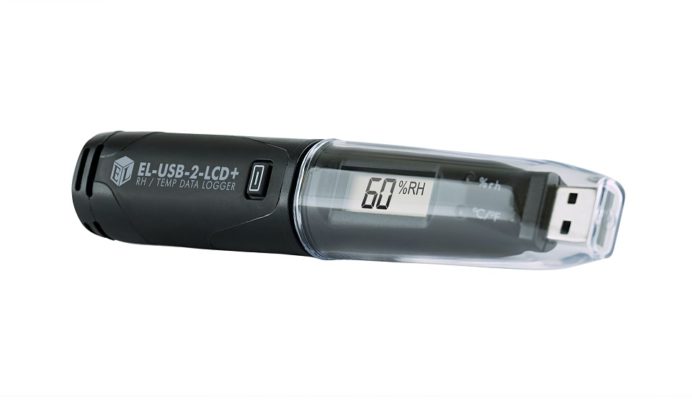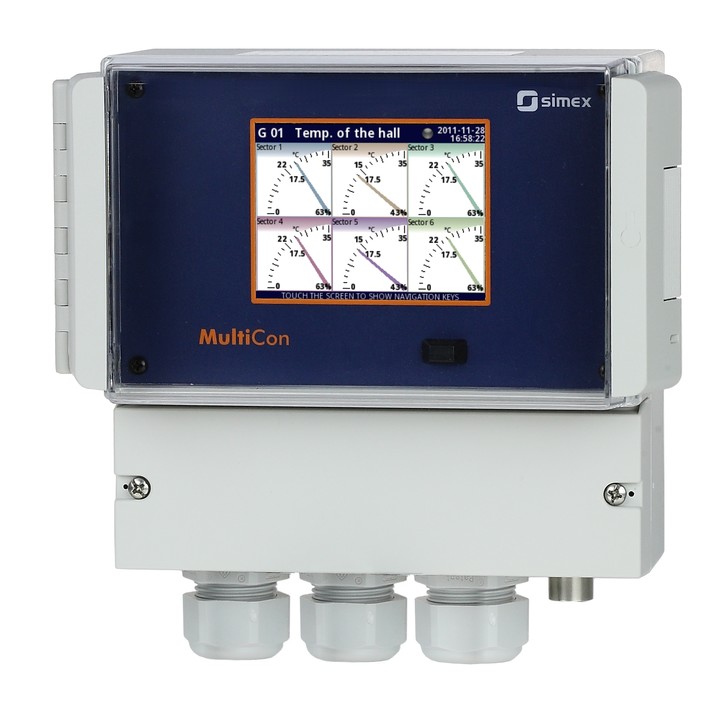What are Data Loggers? How Do They Work?
What is a Data Logger? What is Data Acquisition?
Collecting and analysing temperature data is a cornerstone across various industrial processes. From scientific research to heating and ventilation systems, accurate data is key to informed decision-making and quality control. So, what is a data logger?
Data loggers (also known as dataloggers or data recorders) are invaluable tools in this endeavour – a device that automates data collection and offers numerous advantages over manual methods.
In this guide, we’ll jump into the world of data loggers, exploring their functionality, types, applications, and the future trends that they are shaping.
At Process Parameters, we offer simple to use, versatile and cost-effective USB data loggers for measuring and storing temperature, humidity, carbon monoxide, voltage and current for a wide range of data logging applications.
Contact us for a free quote or speak to an expert about which data logger is best for your application.
Get in TouchWhat is a Data Logger?
A data logger, or data recorder, is a compact electronic device designed to automatically collect and store data from various temperature sensors over time. They allow an object or environment to be measured, recorded, analysed and validated.
The recorded data is typically stored in internal memory or external storage media, such as SD cards or USB drives, depending on the device. Some advanced data loggers can also transmit data wirelessly to a computer or server for real-time monitoring and analysis.
Unlike manual data collection methods, which are labour-intensive and prone to human error, data loggers ensure accuracy and consistency in recording information. This makes them an indispensable tool in industries where precision and reliability are paramount.

Read our Ultimate Guide to Data Loggers for products and further information. If you’re looking to buy a data logger and have questions, get in touch with our team.
Contact UsBrowse temperature and humidity data loggers available from Process Parameters.
Temperature, Humidity, Carbon Monoxide & Voltage USB Data Loggers
Temperature, Humidity, Carbon Monoxide & Voltage USB Data Loggers
Cold Chain Logistics
How Does a Data Logger Work?
Data loggers consist of several key components that work harmoniously to achieve automated data collection. These include sensors that measure specific parameters like temperature, humidity, pressure, and more. The internal memory stores the collected data, while the processor manages data storage and communication.
A power source, often a battery, keeps the device operational. Data loggers can be programmed to record data at set intervals, making them adaptable to various monitoring scenarios. Acquired data typically is displayed, analysed, and stored on a PC.
Types of Data Loggers
The most common and widely used types of data loggers are temperature, pressure, humidity, voltage and current. Let’s explore temperature, voltage and humidity loggers more in-depth.
Temperature Data Loggers
Temperature data recorders stand out as one of the most commonly utilised measurement tools across all industries. A multitude of diverse designs, models, and configurations exist for temperature logging and humidity monitoring devices. The majority of these devices incorporate internal thermistors or thermocouples.
They are often compatible with various external sensors and temperature probe instruments. Depending on their specific application, certain industries and use cases might necessitate pre-calibration to adhere to particular standards and protocols for compliance purposes.
Voltage Data Loggers
Voltage loggers, also known as electrical data loggers, are available in a broad range of specialised setups and models.
Devices for logging voltage data are capable of accommodating various types of voltage measurements, spanning from pressure to torque and load to force. Current logging tools encompass a wide array of devices for monitoring both AC and DC currents.
These tools are frequently employed for validating construction or heavy industrial equipment. They are extensively preferred for monitoring energy usage, and identifying fluctuations such as drops and surges, and are available in single-channel as well as multi-channel configurations.
Humidity Data Loggers
Humidity data loggers are devices designed to record and monitor humidity levels, and often, they encompass temperature measurements as well. These loggers often provide added functionalities for capturing moisture-related information, including dew point, absolute concentrations, and relative humidity levels.
These devices are particularly useful in situations where maintaining specific humidity and temperature conditions is crucial, such as in climate-controlled environments, storage facilities for sensitive materials, or research laboratories.
By measuring and logging humidity data, these loggers help ensure optimal conditions and facilitate the analysis of environmental variations over time.
Benefits of Using a Data Logger
Data logging can be done manually by constant human observation. An example of this might be recording the temperature changes over the course of an hour in a centrally heated room using a timer, thermometer, pen and paper. Using an electronic data logger is much more effective, accurate and reliable.
The time taken to see the benefits of using data loggers will depend on the way in which the units are used. However, quantifiable benefits from using loggers may often be seen within a very short time. Typically, only one or two logging runs are required to pinpoint areas that would benefit from extra attention.
- Accuracy and Continuity: Automated data collection eliminates human error and provides a continuous stream of accurate information.
- Time and Cost Efficiency: Data loggers save time by removing the need for manual data recording and reducing costs associated with human labour.
- Long-term Value: Their durability ensures long-term data collection, which is invaluable for trend analysis and research.
Where are Data Loggers Used in Industry?
Data loggers are used for a wide range of applications in many industries worldwide. These include, for example:
- Environmental research into climate change, weather patterns, seasonal changes, wildlife habitats, oceans and rivers.
- Building/facilities/energy efficiency management: monitoring power usage, heating, ventilation and air conditioning systems in houses, schools, offices, warehouses, industrial premises and museums.
- The preparation, storage, transportation and display of food.
- Laboratories and healthcare: sterilisation processes, cryogenic applications, and environmental controls; in the transportation of vaccines, blood products, organs and medical equipment; and for medical storage in fridges, freezers and culture rooms.
- Logistics industry: monitoring temperature and humidity during storage and transportation and throughout the cold chain (including HACCP compliance).
- In agriculture, horticulture and livestock rearing: monitoring growing, storage, transportation and animal health conditions.
- Composting process monitoring.
- Manufacturing, including process applications, environment/processes, energy and facilities management.
- Museums and galleries: display and transportation of sensitive items; artefacts and archives monitoring.

Why are Data Loggers Required?
Data loggers guarantee adherence to industry-specific regulations and procedures for quality control and environmental management.
- Food: According to EC Directive 92/1 in the food sector, food preparation, storage, or transportation must be capable of verifying that temperature levels have been upheld (Due Diligence). Data logging ensures comprehensive traceability from the initial preparation phase all the way to the delivery.
- Medical: Data loggers play a crucial role in upholding the WHO’s recommendations for regular monitoring of vaccines, ensuring they remain within the temperature range of +2 to +8°C throughout storage, transportation, and until administration.
- Compost and agriculture: Within the compost industry, data loggers contribute to the achievement of strict environmental regulations, such as compliance with BSI PAS 100:2005, which mandates accurate monitoring and recording of compost process temperatures.
- Energy consumption: Temperature data loggers emerge as valuable instruments for organisations in monitoring energy consumption in alignment with ESOS and ISO 50001 standards.
Installation and Maintenance
Proper installation and maintenance are critical for accurate data collection:
- Installation: Follow manufacturer guidelines for sensor placement and secure installation.
- Maintenance: Regularly check and calibrate sensors, replace batteries, and ensure the data logger’s integrity.
- Troubleshooting: Address common issues like sensor drift or communication errors promptly.
Future Trends in Data Logging
The future of data logging holds exciting possibilities:
- IoT Integration: Data loggers are likely to be seamlessly integrated into the Internet of Things, enabling real-time remote monitoring.
- Advanced Sensor Technology: Continued advancements in sensor technology will lead to higher accuracy and efficiency.
- Predictive Analytics: Data logger-generated data may fuel predictive analytics and machine learning models for more informed decision-making.
What is Data Acquisition? What are Data Acquisition Systems?
Data acquisition, as the name implies, refers to the process of collecting, measuring, and recording data from various sources or sensors and converting it into a form that can be analysed, stored, or displayed by a computer or other data processing device.
This data can come from a wide range of sources, including sensors, instruments, devices, and even human input.
Data acquisition systems typically consist of hardware and software components. The hardware component involves sensors, transducers, and other instruments that gather data, along with signal conditioning and analogue-to-digital converters to convert analogue signals into digital data.
The software component manages data collection, storage, and analysis, allowing users to interact with and make sense of the acquired information.
What is a Data Logger – Final Thoughts
Data loggers have revolutionised the way data is collected, benefiting a wide array of industries. Their ability to provide accurate, continuous data in diverse environments makes them indispensable tools for professionals.
By understanding their functionality, applications, and the benefits they offer, individuals and industries can harness their potential to drive progress and make informed decisions.
Enquire to find out more about our data loggers available and how they can become a part of your application. We’d love to hear from you!
Send An EnquiryView our Data Loggers
Temperature, Humidity, Carbon Monoxide & Voltage USB Data Loggers
Temperature, Humidity, Carbon Monoxide & Voltage USB Data Loggers
Cold Chain Logistics
FAQs
How to choose a data logger?
First and foremost, the primary influencing factors will be the exact type of data collection you need to perform and the purpose(s) for which the data is to be used. Have a think about cost, size, weight, battery life, configuration, software integration and interfaces, memory capacity, accuracy and precision.
What is meant by data loggers?
A data logger is a device that enables you to record and store measurement data over a period of time. A variety of measurements are possible depending on the unit selected. Examples include temperature, humidity, current, voltage and carbon monoxide.




